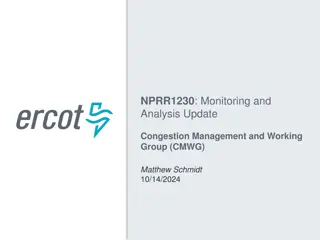
Force Fields in Molecular Dynamics Simulations
Dive into the world of force fields in molecular dynamics simulations to grasp their significance in describing and simulating various situations. Explore the essential terms, applications, and challenges associated with force fields in this informative content.
Download Presentation

Please find below an Image/Link to download the presentation.
The content on the website is provided AS IS for your information and personal use only. It may not be sold, licensed, or shared on other websites without obtaining consent from the author. If you encounter any issues during the download, it is possible that the publisher has removed the file from their server.
You are allowed to download the files provided on this website for personal or commercial use, subject to the condition that they are used lawfully. All files are the property of their respective owners.
The content on the website is provided AS IS for your information and personal use only. It may not be sold, licensed, or shared on other websites without obtaining consent from the author.
E N D
Presentation Transcript
Rerun of MD and FF Force fields for MD and beyond
Force Field A force field is a set of parameters with the associated rules that together can be used to describe a situation and to simulate its future. The main problem you will encounter while studying FF is that there are very many, radically different FF. Actually, FF are everywhere around us, and touch us every day.
FF are everywhere AH uses FF to make us buy more than we intend The water flow in the Waal Stock market swings Fire exist usage in theatres Use of electrical power throughout the country Secondary structure of proteins Molecular dynamics Etcetera
FF for MD The force field for MD and EM holds about 5 terms. These are still the ones that were understood in the 60 s. Other terms either are poorly understood, or too hard to calculate. The present ~5 terms are optimised to also capture information related to all the terms not yet in use.
FF for MD You better look up those five terms, and understand them deeply. All five terms in the force field are used on all atom combinations every step of the simulation. Most CPU time is spent on water interactions In MD s=v*t, F=m*a, etc. So atoms can only fly in a straight line. Therefore the time step (time before we calculate new v) is short (1-5 fs).
Multiple minima problem And in a high-dimensional space this problem gets very, very much worse.
The other FF If I throw 2 dice and 1 coin inside a small coffee cup, one could expect any asymmetry in the dices to show up much stronger (I also don t know why, but I needed a simple example). How do we check if the dices are honest?
The other FF How did they ever find out how the DNA code translates into protein? And how would we do it today?
How do we predict RNA binding loops? 1) Datasets
How do we predict RNA binding loops? 1) Datasets 2) Counting
How do we predict RNA binding loops? 1) Datasets 2) Counting 3) G
How do we predict RNA binding loops? 1) Datasets 2) Counting 3) G 4) Algorithm
How do we predict RNA binding loops? 1) Datasets 2) Counting 3) G 4) Algorithm 5) Validate
And now FF to predict secondary structure FF to predict how ruthenium oxide binds to photographic plate FF to predict which methionines are good to click a reactive group onto? FF to predict how a ligand binds to a receptor FF to predict TM helices.

